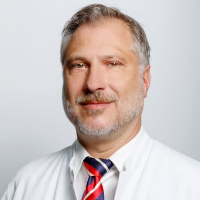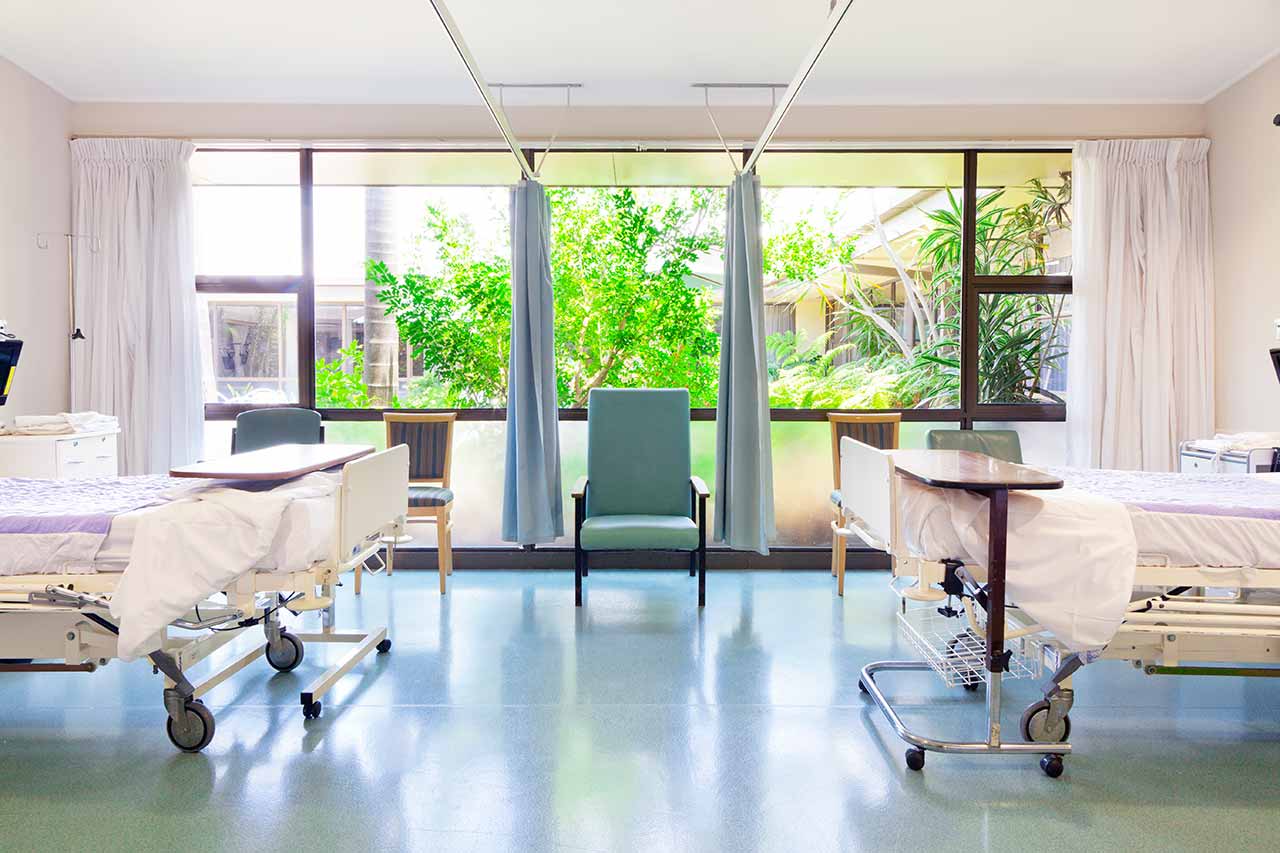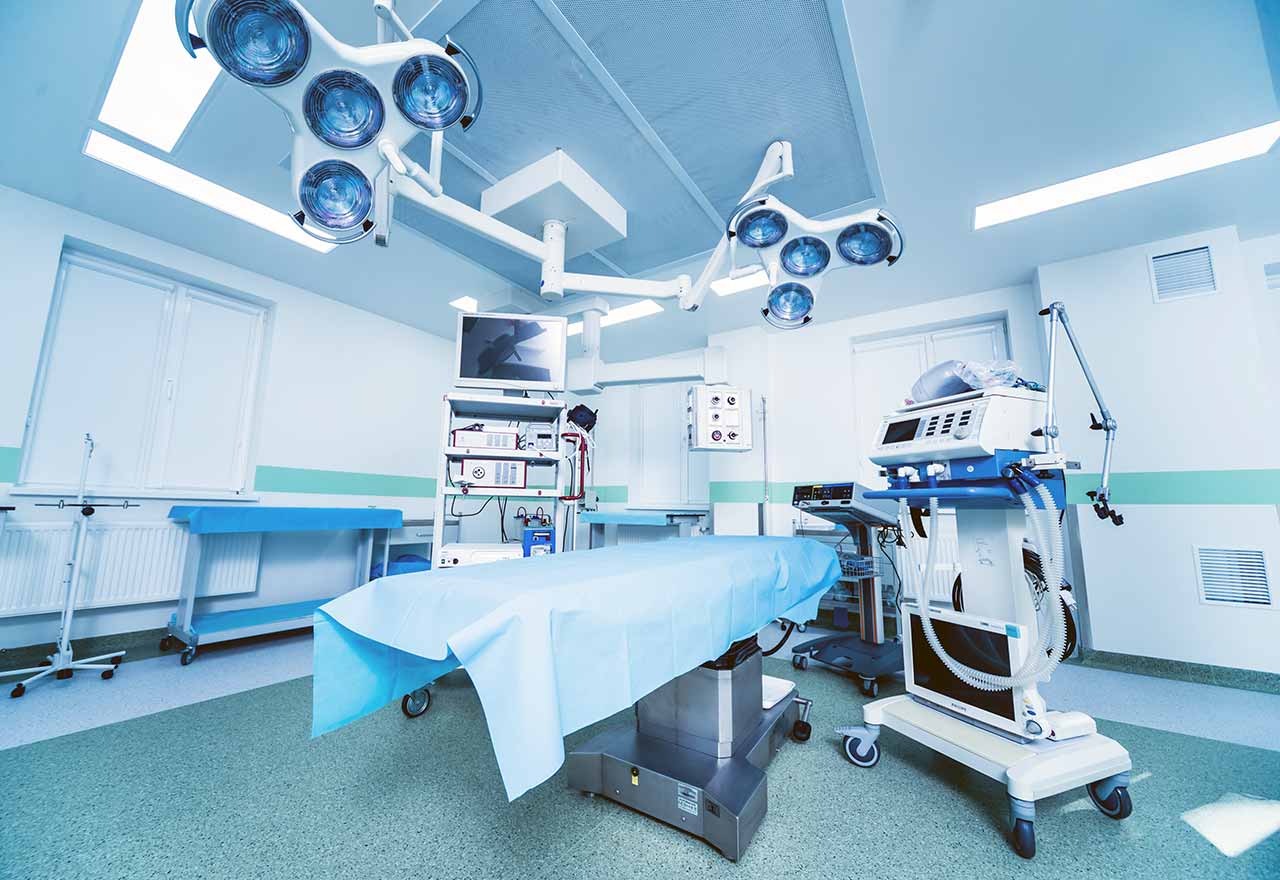
The program includes:
- Initial presentation in the clinic
- clinical history taking
- physical examination
- review of medical records
- laboratory tests:
- complete blood count
- general urine analysis
- biochemical analysis of blood
- indicators of inflammation
- indicators blood coagulation
- x-ray examination
- CT/MRI scan
- preoperative care
- hip replacement
- symptomatic treatment
- control examinations
- physiotherapeutic procedures
- orthopedic appliances
- the cost of essential medicines and materials
- nursing services
- full hospital accommodation
- explanation of future recommendations
How program is carried out
Preliminary preparation for hip replacement includes quitting smoking and drinking alcohol; cancelling non-steroidal anti-inflammatory drugs (diclofenac, ibuprofen); cancelling anticoagulants (warfarin); normalization of body mass, if possible.
Preoperative examination, including consultation with an anesthesiologist and necessary related specialists, takes 1-2 days. According to its results, the most suitable endoprosthesis is selected.
Hip replacement. The operation is performed under general anesthesia. The patient lies on his side, the affected leg is bent and fixed in this position. The surgeon makes an incision 15-20 cm long, minimally traumatizing the muscles and nerve endings. Through this incision, miniature instruments are inserted to remove the damaged joint structures. Healthy bone is adjusted for further reliable implant fixation.
The surgeon installs a femoral stem in the center of the upper part of the femur. Ball-shaped head of the joint is fixed on it. The surgeon also implants a special liner that facilitates movement of the leg and protects the structures of the prosthesis. After the primary fixation of the prosthesis components, the doctor assesses the joint range of motion, as well as the length and symmetry of the lower limb.
The implant is fixed with cement or cementless method. The doctor treats the operating field with antiseptics, conducts its final revision and sutures the wound layer by layer. A temporary drainage is installed in the joint, and a bandage is applied on top.
Postoperative care. During the first day after the intervention the patient stays in the intensive care unit, under round-the-clock medical supervision. After that, with a smooth course of the postoperative period, the patient is transferred to a regular ward and the drains are removed. The range of motion expands gradually, from light toes movements to walking. Walking with the use of walking aids is allowed in 3-5 days after the operation.
Required documents
- Medical records
- X-ray examination, MRI/CT scan (if available)
Service
You may also book:
 BookingHealth Price from:
BookingHealth Price from:
About the department
The Department of Adult and Pediatric Orthopedics, Traumatology, Hand Surgery, Sports Orthopedics at the Helios Hospital Munich West offers the full range of medical services to the patients suffering from musculoskeletal diseases and injuries of any severity. The department's doctors have a perfect command of both conservative and surgical treatment methods. Whenever possible, the specialists try to avoid surgery, but if conservative treatment does not give good results, the doctors still resort to surgery. The department keeps pace with medical innovations, and thus most of the operations on the musculoskeletal system are performed using minimally invasive techniques. After such surgical procedures, the patient can recover in the shortest possible time. The department's medical team works in strict accordance with the requirements of the German and European professional societies. The department is headed by Dr. med. Alexander Manolopoulos.
The key focus of clinical practice is on joint replacement surgery. The department successfully performs surgery to replace knee, hip, shoulder, elbow and wrist joints, including revision surgery to replace endoprostheses. As of today, joint replacement surgery is performed using minimally invasive techniques, while open interventions are extremely rare. Minimally invasive procedures are the most beneficial for the patient, since they do not require a long recovery period after surgery. When performing laparoscopic interventions, the doctor makes several small skin incisions, through which he inserts special miniature instruments into the joint cavity. The image of the operating field is transmitted on a large screen with multiple zooming, thanks to which the surgeon can clearly see all the anatomical structures. Such an approach improves the accuracy and safety of the surgical intervention. The department uses only high-quality endoprostheses distinguished by a long service life (15-20 years). Joint replacement surgery is the only effective method for relieving pain and restoring movement. Depending on the degree of joint lesion, the orthopedists recommend the patient either partial or total joint replacement surgery. Partial joint replacement surgery involves the replacement of only worn out parts of the joint, for example, femoral head or joint cavity, while total replacement surgery involves the replacement of the entire joint with an endoprosthesis. The department's specialists have already performed thousands of successful joint replacement surgeries, and therefore the patients can be sure that their health is in the reliable hands of experienced professionals in their medical specialty.
The department's specialists are also proud of their outstanding achievements in the field of hand surgery. The medical facility provides both conservative and surgical treatment of many hand pathologies, including carpal tunnel syndrome, Dupuytren's contracture, ganglion, traumatic injuries, inflammatory diseases, congenital hand malformations in children, etc. The department's competence also includes hand replantation surgery.
The department is certified by the German Trauma Society and has the status of a regional Trauma Center, therefore it admits patients with injuries of varying severity. The department's emergency medical service operates 24 hours a day. When admitted to the department, the patient undergoes all the required diagnostic examinations, including X-ray, CT and MRI scans. This allows the doctors to make an accurate diagnosis and prescribe an optimal treatment regimen. The department's traumatologists also have exceptional expertise in the treatment of sports injuries. Should surgical intervention be required, the preference will be given to arthroscopic and minimally invasive surgery, after which the patient can quickly restore mobility and return to everyday life. The patients are also provided with the services of experienced physiotherapists who select the optimal set of physical exercises, contributing to the effective mobilization after the injury.
The department’s service range includes:
- Elbow and shoulder surgery
- Correction of elbow and shoulder instability
- Superficial elbow and shoulder replacement (partial and total)
- Elbow and shoulder joint replacement surgery
- Conservative and surgical treatment of fractures
- Elbow and shoulder injuries (trauma-related and degenerative ones)
- Hand surgery
- Carpal tunnel syndrome
- Trigger fingers
- Dupuytren's contracture
- Tendovaginitis
- Wrist and hand ganglion
- Soft tissue and bone cysts or tumors
- Ligament rupture, for example, on the thumb, and its complications
- Fresh tendon injuries
- Long-term complications of tendon injuries
- Rhizarthrosis
- Tennis elbow and golfer's elbow
- Radial fractures and their late complications
- Wrist fracture and its complications
- Fractures of the metacarpal bone and fingers, their late complications
- Reconstructive plastic surgery to eliminate posttraumatic soft tissue defects
- Joint replacement surgery in the case of posttraumatic and rheumatic joint changes
- Hand malformations in children
- Sudeck's atrophy
- Hand and finger inflammations
- Nail surgery
- Microsurgical replantation methods in the case of traumatic amputation
- Foot surgery (diagnostics and treatment of foot and ankle diseases, deformities)
- Knee, hip, shoulder, elbow and wrist replacement surgery
- Minimally invasive interventions
- Revision interventions
- Pain therapy for chronic back and joint pain
- Physiotherapy
- Spinal surgery (in collaboration with neurosurgeons)
- Diagnostics, conservative and surgical treatment of sports injuries
- Plastic reconstructive interventions
- Emergency medical services
- Other medical services
Photo of the doctor: (c) Helios Klinikum München West
About hospital
According to the reputable Focus magazine, the Helios Hospital Munich West ranks among the best medical facilities in Germany!
The medical complex has all the necessary resources to provide patients with excellent medical services – highly qualified doctors with long clinical experience, advanced medical technologies and high standards of care. The hospital operates on the basis of Ludwig Maximilian University of Munich, and therefore the medical team has access to state-of-the-art technologies and therapeutic techniques, which they actively use in their daily work for the benefit of patients. Despite the technological progress and the presence of the cutting-edge medical advances in the hospital, the focus of doctors is on the patient, who, in addition to effective medical treatment, requires understanding, attention and empathy. The doctors of the hospital make every effort to create a pleasant and friendly atmosphere in the medical center to surround the patient with care and support him on his way to recovery.
The hospital has 412 beds for patient hospitalization. Structurally, the medical center consists of 19 specialized departments, as well as narrowly focused centers, which are responsible for the treatment of a specific group of diseases, for example, diabetes mellitus, colon cancer, head and neck tumors. Each department is represented by a competent team of doctors and nursing staff who provide comprehensive diagnostics, effective treatment and follow-up patient care. Many doctors of the medical facility are known throughout Germany and far beyond its borders, as well as have unique experience and skills that allow them to guarantee a successful treatment outcome even in extremely complex clinical cases. The specialists of the hospital diagnose and treat more than 24,000 inpatients and 31,000 outpatients every year.
The main value for the medical team of the hospital is the patient's health, and therefore the doctors use all the options of modern university medicine to completely save the patient from a disease or achieve a long-term remission. The highly professional doctors and the advanced medical technologies of the hospital contribute to the fact that the medical facility regularly demonstrates high treatment success rates.
Photo: (с) depositphotos
Accommodation in hospital
Patients rooms
The patients of the Hospital Helios Munich West live in comfortable double and quadruple rooms. Each patient room has an ensuite bathroom with a shower and a toilet. The electrically adjustable bed has a special nurse call system. The patients can also use it to manage the TV, radio, turn on and off the lighting in the room, as well as connect headphones. TV and radio are available in every patient room at no extra charge. The patient may use a landline telephone in the patient room at an extra charge.
The patients can also live in single enhanced-comfort rooms, where an accompanying person can stay with the patient as well. These patient rooms are more sophisticated in design. They are equipped with a large bathroom with a toilet, a shower, a large mirror, a hairdryer, toiletries, spare towels and a bathrobe. In addition, the enhanced-comfort patient rooms have a safe for storing valuables and a free minibar with soft drinks.
Meals and Menus
The patients of the hospital are offered three balanced meals a day: buffet breakfast, lunch and dinner. For breakfast, one can have various types of pastries, vegetables, sausages, cheese, tea, coffee. For lunch, one can have a choice of three menus, including a vegetarian one. Dinner is also served buffet style with a wide selection of vegetables, fruits, cheese, sausages, pastries, etc. With appropriate clinical indications, the patient is provided with a dietary or individual menu.
The patients staying in the enhanced-comfort rooms are also offered an individual menu. In addition, the patient has a daily choice of fresh fruit, cakes, tea, coffee and other soft drinks.
On the territory of the hospital one can find a cozy cafe, which offers a large selection of snacks, cakes and drinks. Newspapers and magazines are also available in the cafe.
Further details
Standard rooms include:
Religion
The religious services are available upon request.
Accompanying person
During the inpatient program, the accompanying person can live with the patient in a patient room or a hotel of his choice. Our managers will help you choose the most suitable option.
Hotel
During an outpatient program, the patient can stay at the hotel of his choice. Our managers will help you choose the most suitable option.




